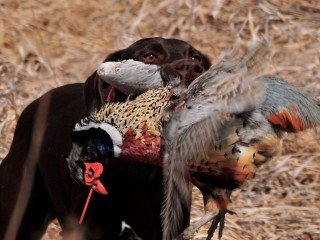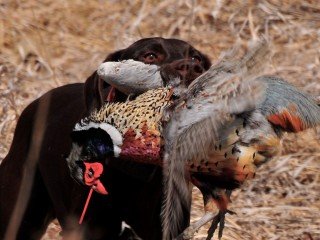 ‘Man’s best friend’ is one of the greatest understatements ever leveled at a dog. As everyone who has ever owned a decent dog knows, a human best friend could never serve us in ways that canines can. For most dog owners who love the outdoors, canines serve as actual family members and cohorts. They indulge us in play and protection, and they attach themselves to us and touch us in ways that generations of words have never been able to adequately describe. Therefore, we all know that we have a duty to our four-legged companions and that duty is being their caretaker. Active, high energy dogs require more maintenance and here are a few tips on how to care for your hiking and hunting dog.
‘Man’s best friend’ is one of the greatest understatements ever leveled at a dog. As everyone who has ever owned a decent dog knows, a human best friend could never serve us in ways that canines can. For most dog owners who love the outdoors, canines serve as actual family members and cohorts. They indulge us in play and protection, and they attach themselves to us and touch us in ways that generations of words have never been able to adequately describe. Therefore, we all know that we have a duty to our four-legged companions and that duty is being their caretaker. Active, high energy dogs require more maintenance and here are a few tips on how to care for your hiking and hunting dog.
The Elements
Heat and freezing temperatures can be brutal on active dogs that thrive in the outdoors. Besides the obvious problem of dehydration and the effect that high temperatures can have on hunting dogs, heat stroke is another major affliction that needs to be prevented. Recognizing and acting on heat stroke should be the highest priority. Common symptoms involve excessive panting, failure to respond to commands, dry skin, high fever and rapid heartbeat. Some extreme symptoms are profuse salivation and vomiting. If you recognize any of these signs, get your dog in some shade, get them cool and try to seek medical attention.
Cold temperatures can also be serious and deadly to dogs. Hypothermia is not a huge player when it comes to affecting high-energy, outdoor dogs, but frostbite is actually common with water dogs in the fall and winter. Frostbite is hard to detect unless a careful study is made of your dog’s anatomy. Some of the first areas that can suffer are the ears, tail, scrotum and feet. Danger signs to look for initially are normal pink tissue areas turning red. If an area has grayish, flakey tissue frostbite has already taken place. Do not rub a suspected area, but rather, try to warm the flesh with warm water or warm, moist towels. Again, seek medical attention.
Fleas and Ticks
Not very many living things enjoy pests and dogs are no different. Besides irritating skin and causing infections, Lyme disease is a serious threat to the health of any dog and if your dog is active in areas where the deer tick is found, prevention should be a priority. The Northeastern and upper Midwestern states are home to most Lyme disease cases, but it can occur anywhere ticks are found. A good flea and tick collar is a great preventative measure, but grooming your dog with a flea comb after outdoor pursuits is a great insurance policy too.
Although it is not advertised, a good flea treatment in the form of a liquid neck application can help prevent mosquito bites. Many viruses are passed on via mosquitoes, but the West Nile virus is the one to watch. Cases occurring in dogs are not that common, but it is possible. You owe it to your fuzzy buddy to be the best caretaker possible in the form of thorough preventative maintenance.








